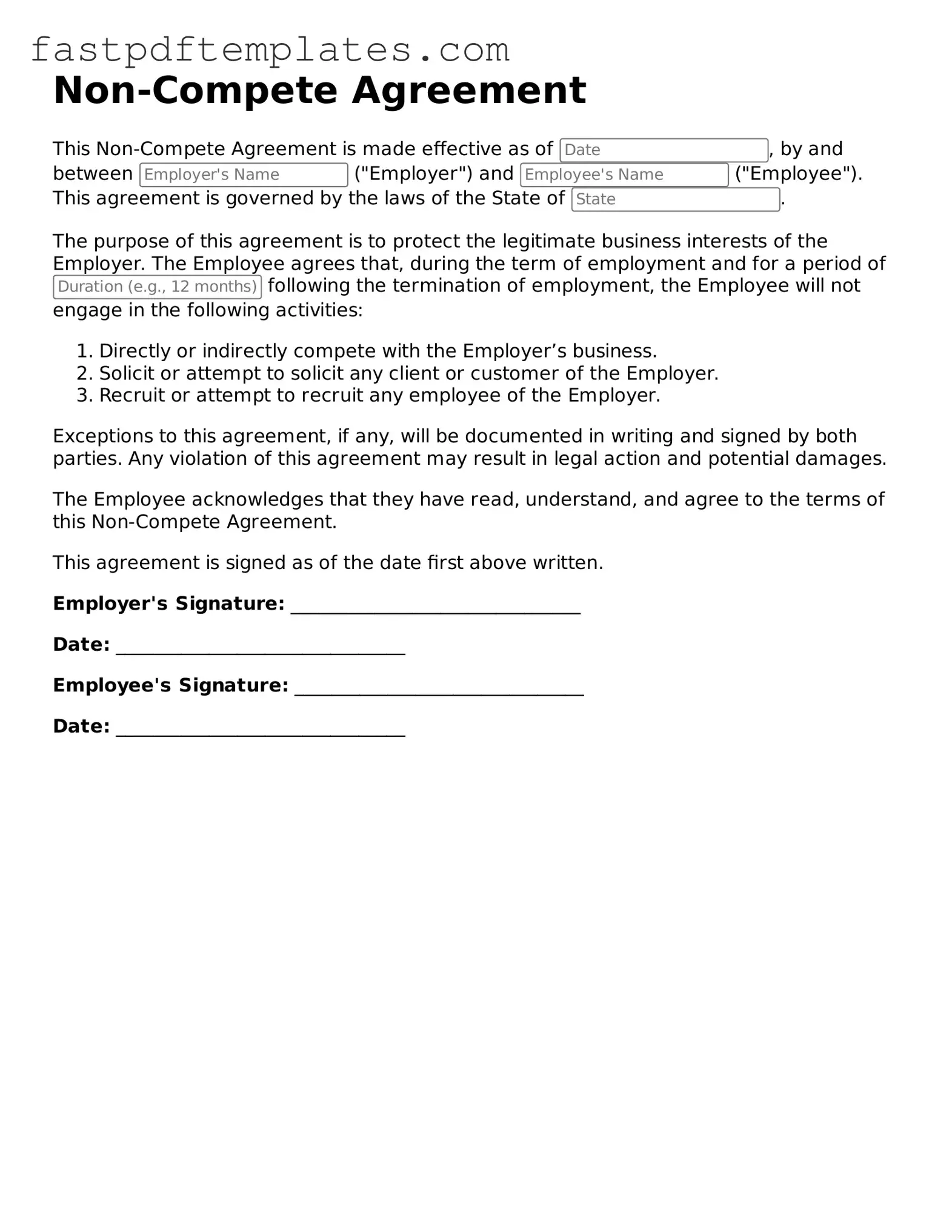Fillable Non-compete Agreement Document
A Non-compete Agreement is a legal document that prevents an employee from working for a competitor or starting a competing business for a specified period after leaving their job. This agreement aims to protect a company's confidential information and trade secrets. Understanding the nuances of this form is crucial for both employers and employees to ensure fair practices and compliance with the law.
Access Document
